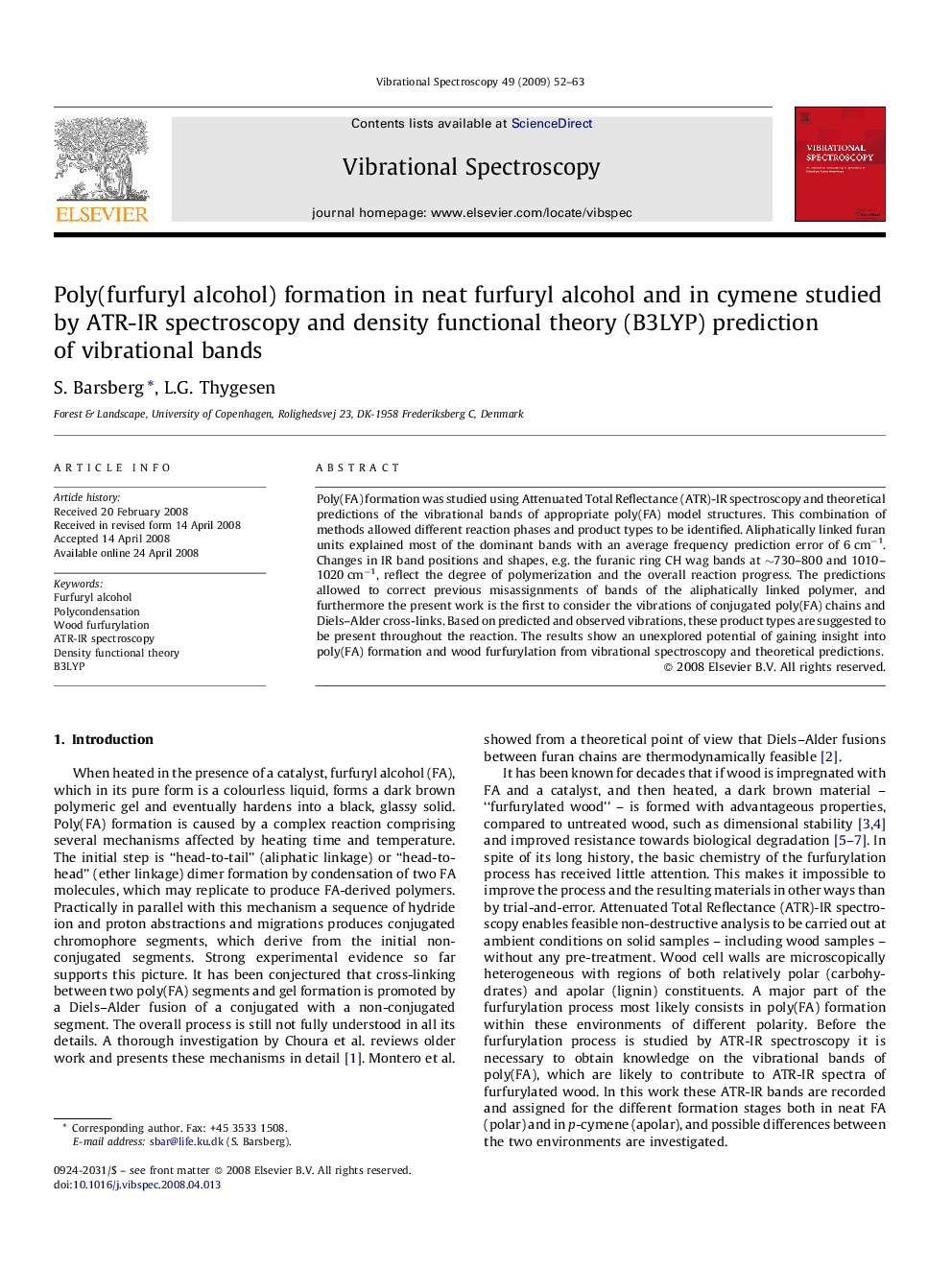| Article ID | Journal | Published Year | Pages | File Type |
|---|---|---|---|---|
| 1250848 | Vibrational Spectroscopy | 2009 | 12 Pages |
Poly(FA) formation was studied using Attenuated Total Reflectance (ATR)-IR spectroscopy and theoretical predictions of the vibrational bands of appropriate poly(FA) model structures. This combination of methods allowed different reaction phases and product types to be identified. Aliphatically linked furan units explained most of the dominant bands with an average frequency prediction error of 6 cm−1. Changes in IR band positions and shapes, e.g. the furanic ring CH wag bands at ∼730–800 and 1010–1020 cm−1, reflect the degree of polymerization and the overall reaction progress. The predictions allowed to correct previous misassignments of bands of the aliphatically linked polymer, and furthermore the present work is the first to consider the vibrations of conjugated poly(FA) chains and Diels–Alder cross-links. Based on predicted and observed vibrations, these product types are suggested to be present throughout the reaction. The results show an unexplored potential of gaining insight into poly(FA) formation and wood furfurylation from vibrational spectroscopy and theoretical predictions.
